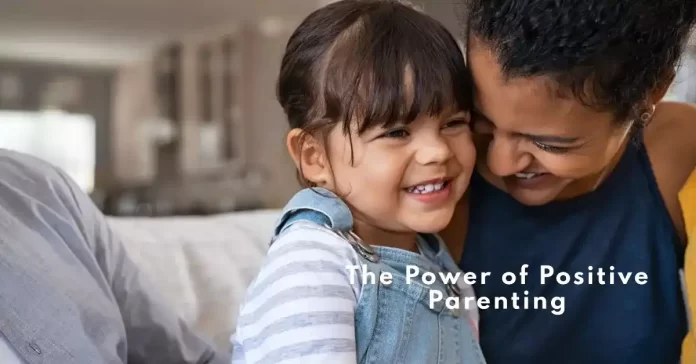
We explore how positive parenting can transform your relationship with your children. We provide practical and effective strategies that help you build stronger connections with your children, fostering a loving and supportive environment for their growth and development. By fostering a nurturing and supportive environment, promoting open communication, and implementing positive discipline techniques, parents can unlock the potential for their children to thrive emotionally, socially, and academically.
Effective Communication Techniques for Positive Parenting
Foster a nurturing environment
Create a loving and supportive atmosphere at home where your children feel safe, valued, and encouraged to express themselves. For example, offering words of encouragement and affection provides physical comfort when they are upset and creates a cozy and welcoming space for family bonding.Practice active listening
When your children are talking themselves to you, actively listen and give them your undivided attention, demonstrating genuine interest and validating their feelings and experiences. For instance, when your child shares a story about their day at school, put away distractions, maintain eye contact, and respond with empathy and understanding.Use positive reinforcement
Acknowledge and praise your children’s efforts and achievements, focusing on their strengths and accomplishments to boost their self-esteem. For example, when your child completes a challenging task or shows kindness to others, express genuine appreciation and highlight the qualities that contributed to their success.Set clear boundaries
Establish consistent rules and expectations, providing structure and guidance that help children feel secure and understand appropriate behavior. For instance, explain household rules such as designated screen time limits or expectations regarding chores and explain the reasons behind them.Encourage open communication
Foster a culture of open dialogue where your children feel comfortable discussing their thoughts, concerns, and challenges with you. For example, create regular opportunities for family discussions or implement a daily check-in time where everyone can share their highs and lows of the day.Teach problem-solving skills
Empower your children to find solutions to their problems by guiding them through steps of brainstorming and decision-making. For example, if your child is facing a conflict with a friend, encourage them to consider different perspectives, explore possible solutions, and support them in implementing their chosen approach.Practice empathy and understanding
Put yourself in your children’s shoes, validating their emotions and perspectives even if you may not always agree with them. For instance, if your child is upset about not being invited to a birthday party, empathize with their sentiment of disappointment and provide a listening ear to help them process their emotions.Implement positive discipline techniques
Utilize strategies such as logical consequences, time-outs, or redirection, focusing on teaching lessons and promoting self-discipline rather than punishment. For example, if your child forgets to complete their homework, instead of scolding them, discuss the natural consequence of having to catch up on missed work and brainstorm strategies to prevent future forgetfulness.Create special bonding moments
Dedicate quality time to connect with your children through shared activities, such as family outings, game nights, or one-on-one time. For example, plan a family hike where everyone can enjoy nature together or have a regular “date night” with each child individually to focus on their interests and strengthen their bond.Lead by example
Be a role model for your children by demonstrating kindness, respect, and empathy in your own words and actions as they learn by observing and imitating you. For instance, you can model effective problem-solving by engaging in calm and constructive discussions when conflicts arise with your partner or other family members. You demonstrate the importance of open communication and collaborative problem-solving with your children.
Conclusion
You can unlock a deeper bond with your children and empower them to develop into resilient and confident individuals. Show them love, understanding, and consistent support to create a positive family dynamic that cultivates strong connections, mutual respect, and lifelong happiness.
Frequently Asked Questions (FAQs)
How can positive parenting techniques help build stronger connections with my children?
Positive parenting techniques, such as active listening, positive reinforcement, and open communication, create a nurturing environment that fosters trust and strengthens the parent-child bond.
What are some effective strategies for practicing active listening with my children?
To practice active listening, actively engage with your children by giving them your full attention, maintaining eye contact, and using verbal and non-verbal cues to demonstrate your genuine interest and engagement in their thoughts and feelings.
How can I effectively implement positive discipline techniques in my parenting approach?
Positive discipline techniques focus on teaching lessons, setting clear boundaries, and guiding children toward understanding the consequences of their actions while promoting self-discipline and respect.
How can I balance setting boundaries with allowing my children to express themselves?
Setting boundaries is essential for creating structure and safety, but it is equally crucial to encourage your children to express themselves and validate their feelings, thoughts, and ideas.
How can I strengthen the connection with my child during challenging times or conflicts?
Prioritize open communication, empathy, and understanding during challenging times or conflicts. Create a safe space for your child to share their feelings, actively listen to their perspective, and work together to find solutions.










